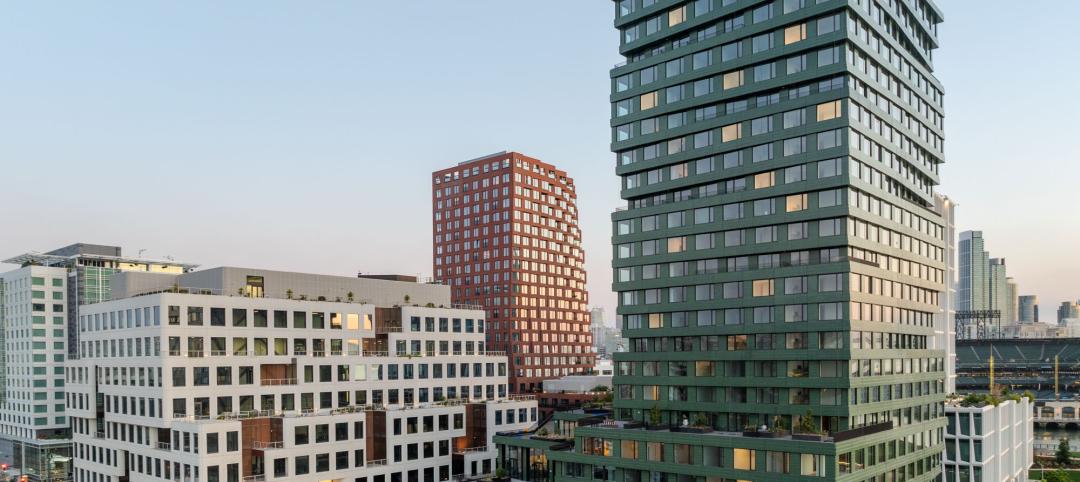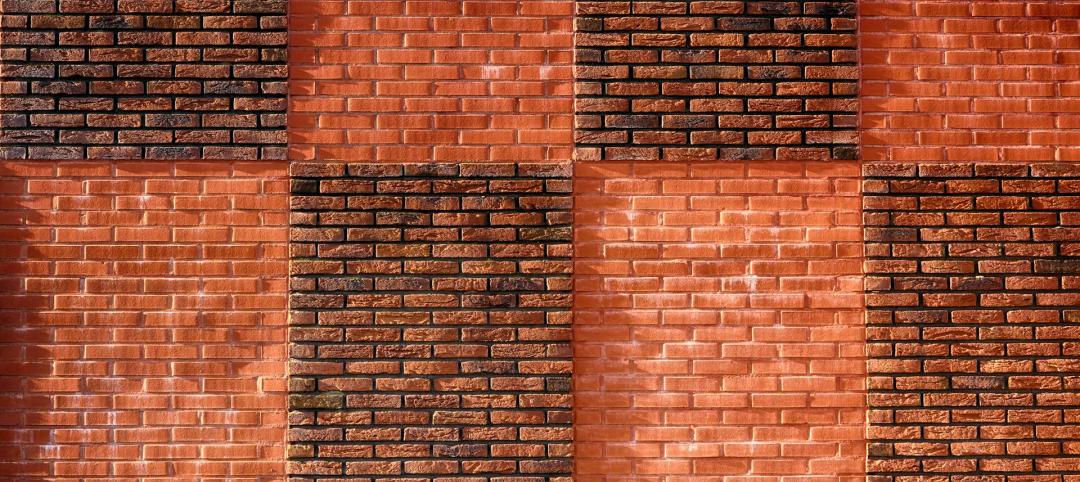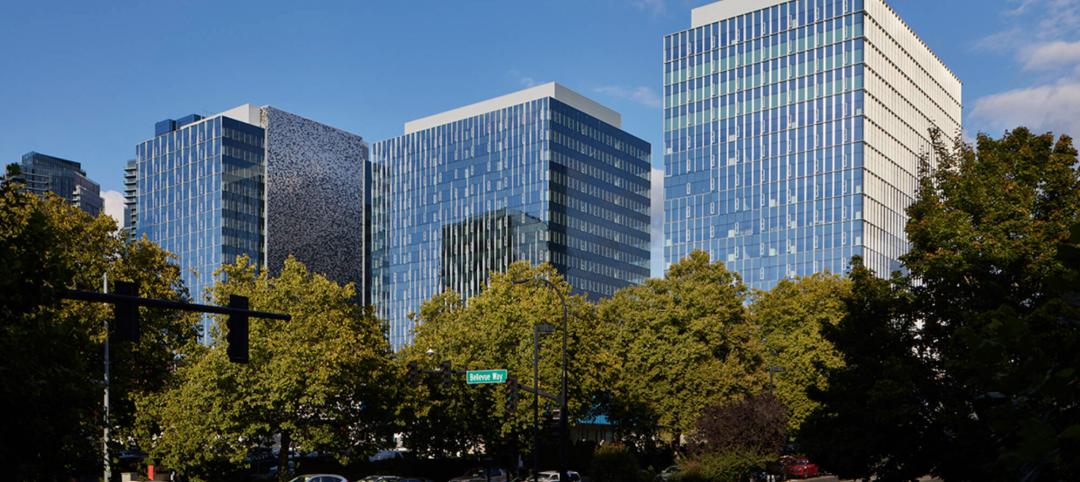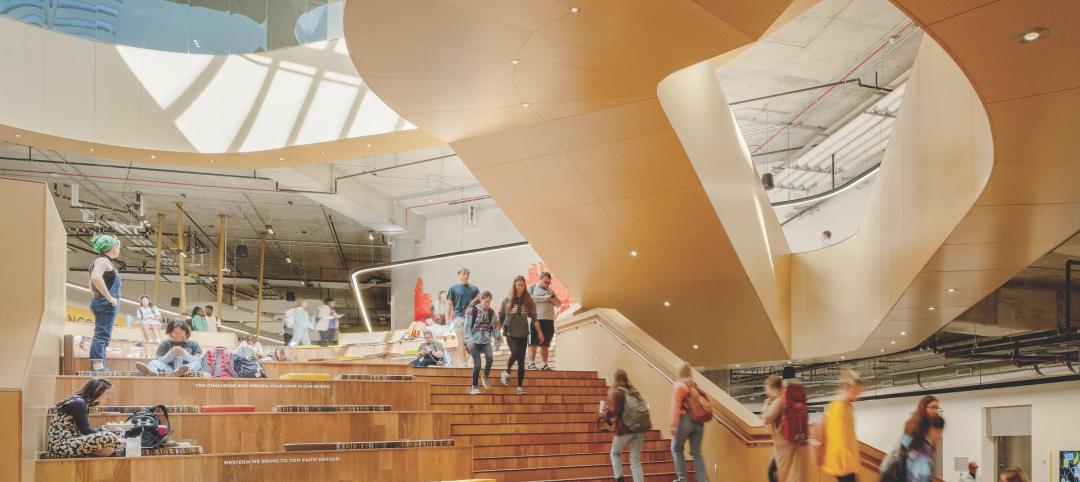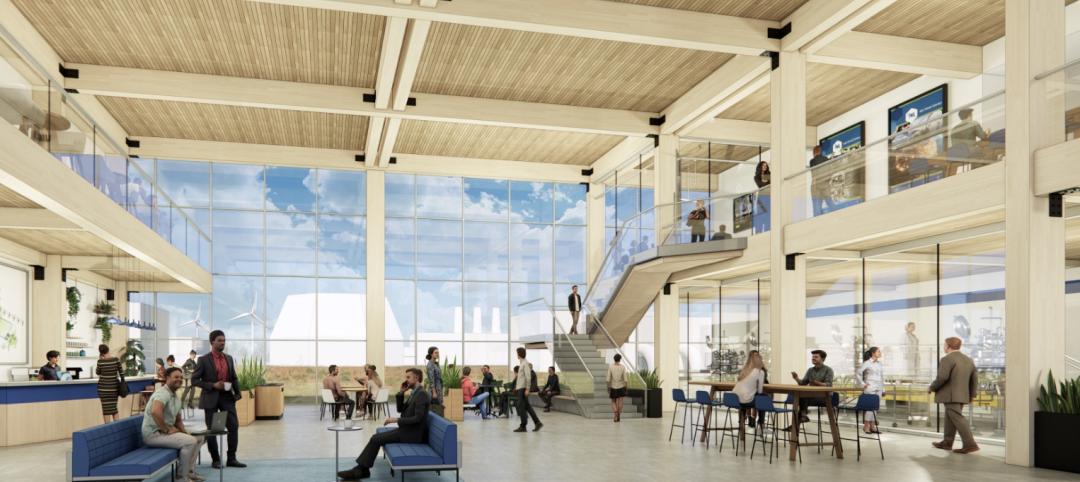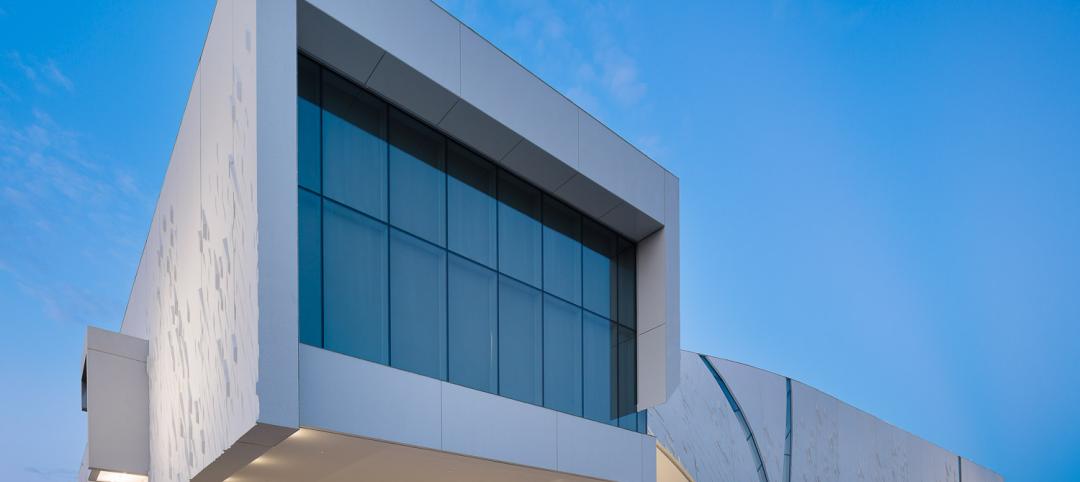 |
|
In an effort to reduce carbon dioxide emissions and reliance on fossil fuels, the design team for the nine-story, 30-meter-tall Stadthaus tower in East London chose to build the structure entirely in wood. |
At a glance, East London's newest high-rise apartment complex looks like your typical multifamily residential tower. All 29 units in the nine-story, mixed-use development come standard with hardwood floors, granite countertops, stainless-steel appliances, and exterior balconies. Bright-white plasterboard finishes provide a blank canvas for residents, while large, operable windows let in fresh air and offer views of the surrounding Hackney borough.
But behind the high-end finishes is an all-wood structure that is as unconventional as construction gets these days. When it was completed this past January, the 30-meter Stadthaus tower stood as the world's tallest residential structure constructed entirely in timber and one of the tallest all-wood buildings on the planet.
Why use wood when concrete and steel are proven, economical solutions for high-rise construction?
 |
|
The tower’s structural system consists of cross-laminated timber (CLT) panels pieced together to form load-bearing walls and floors. Even the elevator and stair shafts are constructed of prefabricated CLT. |
For design architect Andrew Waugh, the decision to go with wood was purely a sustainable one.
"We'd been looking for ways in which we could replace concrete and steel construction wherever possible in an effort to reduce carbon dioxide emissions and reliance on fossil fuels," says Waugh, director of Waugh Thistleton Architects, which teamed with structural engineer Techniker Ltd. (both based in London) to design the structure for owner/developer Telford Homes, Hertfordshire.
Waugh says that by using wood for the structure instead of concrete or steel, the team was able to construct a building that has far less embodied CO2 emissions and reliance on fossil fuel—calculations show that the building will be carbon-neutral in just 21 years. The prospect of long-term CO2 emissions savings was enough to convince the client and local code and city officials to move ahead with the unusual, all-wood design scheme.
 |
 |
|
The finished apartments look like typical multifamily residential units, with bright-white plasterboard finishes and large, operable windows. But behind the plasterboard are solid wood panels instead of traditional steel or wood studs. The wall panels are 41/2 inches thick and the floor panels are six inches thick. |
Since traditional wood-frame construction is not rated for buildings taller than three or four stories, the design team had to come up with an alternative construction method for the Stadthaus project. Waugh's design team found a solution in cross-laminated timber (CLT), a process by which wood sandwich panels are formed by gluing timber strips together in a crisscross pattern to create a solid mass element with minimal movement characteristics.
"It's basically jumbo plywood," says Waugh, who says the panels can be anywhere from just under two inches thick to three feet thick, depending on the application. The result is a structurally rated unit that can be integrated with other panels to form load-bearing walls and floors for mid- and high-rise structures—without the need for concrete or steel structural members.
At Stadthaus, even the elevator and stair shafts are constructed of prefabricated CLT. The only concrete used in the building is for the foundation system and two-inch-thick floating slabs atop the timber floors for acoustical insulation.
 |
|
Cross-section shows the simplicity of the structural design. The cross-laminated timber walls and floors are held together with steel angles and screws. |
The design team specified 4½-inch-thick panels for the walls and six-inch-thick panels for the floors. Austria-based KLH fabricated panels and erected the final structure. All door and window openings were cut out in the factory using a CNC router. The finished panels were shipped to the job site, where they were craned into position and secured using two-inch galvanized steel angles and three-inch screws. In areas where additional reinforcement was required, screws were added to strengthen the structure. Progressive collapse is avoided by providing sufficient redundancy so that any single element can be removed without structural failure.
"The beauty behind the whole system is that it's incredibly simple," says Waugh, adding that it took the four-man KLH construction crew just 27 days to erect the nine-story structure. The construction time savings helped to compress the overall project schedule to just 46 weeks—40% shorter than if the team used traditional concrete frame construction, according to Waugh. "The guys building the structure come from the same factory where the timber panels were manufactured, so the understanding of the material is constant throughout the process."
Like most CLT manufacturers, KLH uses formaldehyde-free adhesive products, such as PUR, to form the panels, which are manufactured in 10×40-foot sheets. The panels have zero off-gassing and can be converted into biomass fuel at the end of their useful life—a process that KLH relies on to power its manufacturing facility and a nearby village.
"The material itself has an asset value throughout its life, unlike strand board, which is held together with formaldehyde- or solvent-based adhesives and must go into landfill," says Waugh. This means that the Stadthaus tower is completely recyclable and may one day be dismantled to help power London's omnibuses—or its electrical grid.
Related Stories
AEC Tech Innovation | Oct 8, 2024
New ABC technology report examines how AI can enhance efficiency, innovation
The latest annual technology report from Associated Builders and Contractors delves into how artificial intelligence can enhance efficiency and innovation in the construction sector. The report includes a resource guide, a case study, insight papers, and an essay concerning applied uses for AI planning, development, and execution.
Healthcare Facilities | Oct 8, 2024
Herzog & de Meuron completes Switzerland’s largest children’s hospital
The new University Children’s Hospital Zurich features 114 rooftop patient rooms designed like wooden cottages with their own roofs. The project also includes a research and teaching facility.
Mixed-Use | Oct 7, 2024
New mixed-use tower by Studio Gang completes first phase of San Francisco waterfront redevelopment
Construction was recently completed on Verde, a new mixed-use tower along the San Francisco waterfront, marking the end of the first phase of the Mission Rock development. Verde is the fourth and final building of phase one of the 28-acre project that will be constructed in several phases guided by design principles developed by a design cohort led by Studio Gang.
Brick and Masonry | Oct 7, 2024
A journey through masonry reclad litigation
This blog post by Walter P Moore's Mallory Buckley, RRO, PE, BECxP + CxA+BE, and Bob Hancock, MBA, JD, of Munsch Hardt Kopf & Harr PC, explains the importance of documentation, correspondence between parties, and supporting the claims for a Plaintiff-party, while facilitating continuous use of the facility, on construction litigation projects.
Glass and Glazing | Oct 7, 2024
Pattern language: An exploration of digital printing on architectural glazing
Architectural Glazing has long been an important expressive tool which, when selected and detailed thoughtfully, can contribute to the successful transformation of architectural concepts to reality.
University Buildings | Oct 4, 2024
Renovations are raising higher education campuses to modern standards
AEC higher ed Giants report working on a variety of building types, from performing arts centers and libraries to business schools. Hybrid learning is seemingly here to stay. And where possible, these projects address wellness and mental health concerns.
AEC Tech | Oct 3, 2024
4 ways AI impacts building design beyond dramatic imagery
Kristen Forward, Design Technology Futures Leader, NBBJ, shows four ways the firm is using AI to generate value for its clients.
Laboratories | Oct 2, 2024
Trends in scientific research environments: Q&A with Flad's Matt McCord
As part of an ongoing series, Matt McCord, AIA, NCARB, LEED AP BD+C, Associate Principal with Flad Architects, discusses the future of the scientific workplace.
Museums | Oct 1, 2024
UT Dallas opens Morphosis-designed Crow Museum of Asian Art
In Richardson, Tex., the University of Texas at Dallas has opened a second location for the Crow Museum of Asian Art—the first of multiple buildings that will be part of a 12-acre cultural district. When completed, the arts and performance complex, called the Edith and Peter O’Donnell Jr. Athenaeum, will include two museums, a performance hall and music building, a grand plaza, and a dedicated parking structure on the Richardson campus.
Data Centers | Oct 1, 2024
10 biggest impacts to the data center market in 2024–2025
While AI sends the data center market into the stratosphere, the sector’s accelerated growth remains impacted by speed-to-market demands, supply chain issues, and design innovation necessities.




